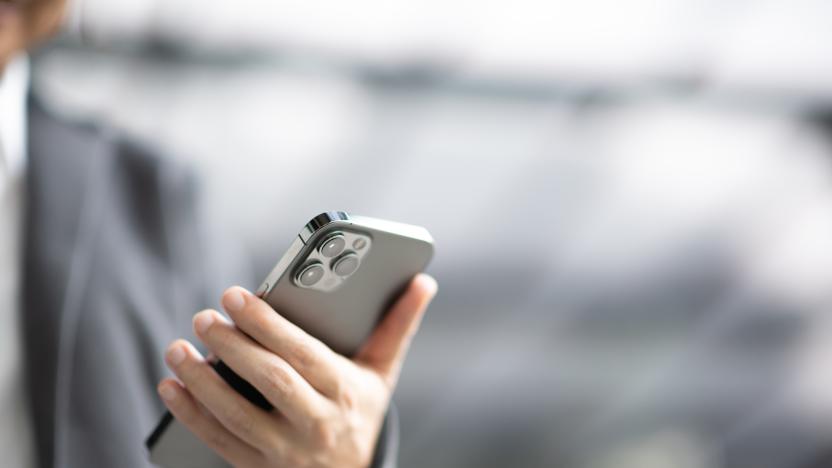emergencies
Latest

Amazon permanently allows workers to carry phones following warehouse collapse
Amazon will permanently allow warehouse employees to keep their cell phones with them at work after temporarily allowing them during the pandemic.

Apple's rumored iPhone satellite support may be for emergency calls and messages
The rumored satellite features for future iPhones are reserved for emergency uses only, according to Bloomberg's Mark Gurman.

Twitter announces Twitter Alerts for SMS and push notifications during emergencies
We just saw Twitter broaden its use of push notifications for tweets it thinks you might find interesting, and the social network is now also expanding their use for a more serious matter. The company has just announced a new Twitter Alerts feature, which it says will deliver "accurate information from credible organizations" during an emergency or natural disaster. To ensure you don't miss them, those alerts will be delivered via SMS in addition to a push notification on Android or iOS, and you won't be getting notifications from just anyone who wants to send them. At launch, only a hundred odd NGOs and governmental agencies in the U.S., Japan and Korea are able to send the alerts, although Twitter says it will be expanding that to include organizations in other countries. You can sign up to receive the alerts by going to an organization's Alerts setup page; just add "/alerts" at the end of its Twitter URL, or find it on Twitter's list of participating organizations.

Hand-cranked vending machine offers products sans power, refreshments during emergencies (video)
Ever needed to grab a bottle of water only to find the vending machine you've spotted is without power? The folks in Japan have, especially in the period immediately following natural disasters. The solution? Easy. A hand-cranked vending machine that still affords you the option of your desired food or beverage even during an emergency when the power is down. Sanden, a Japanese vending outfit, has developed the system that would allow the country's 5.5 million machines to run sans electricity or solar power and rely on good ol' fashioned muscle. You'll just need to dish out 70 cranks, in addition to the cost of your selection, and in about 20 seconds the kit powers on. The machine shown here will dispense around seven bottles before needing a full re-crank and there's no word on what the additional cost per vending unit will be. For look at the tech in action, hit the video above and prepare for a bicep workout.

ARMTEC's SACI firefighting robot
It seems the Foundation for Industrial and Scientific Research in Norway (SINTEF) isn't the only game in town, er, the world, out to make firefighters' jobs a lot easier (or endangered). Brazil's ARMTEC has crafted a water-blasting robot -- dubbed SACI -- that would make a warehouse of Super Soakers look like child's play. The bot, obviously immune to smoke, fear, and extreme heat, can quench flames in a trio of ways: a direct stream, foam blast, or a wide-reaching "mist" approach. To extinguish those hard-to-reach hot spots, it touts a maximum blast of 60 meters, and the cannon pivots from 20 - 70 degrees vertically while being wheeled around on the tank-like track system. Unlike the Anna Konda, which has motors powered by a regular fire hose, this remotely controlled machine requires batteries to maneuver itself around. But this fearless commander doesn't get burnt out quickly, as it can pump fluids for three solid hours before needing a recharge. So if your local fire department has too many flames to handle, and not enough men to keep things cool, snagging a tag-team of SACIs may be in order to beat the heat.[Via Robot Gossip]

Anna Konda: the firefighting snakebot
So it looks like firefighters may be the next unlucky professionals replaced by cheap robotic labor, at least if a snakebot built by the Foundation for Industrial and Scientific Research in Norway (SINTEF) ever makes it into mass production. Lovingly nicknamed Anna Konda (no explanation necessary), the Norwegian bot was assembled using 20 hydraulic motors powered by a regular fire hose, whose 100 bars of pressure give it enough strength to break through walls and even lift a car right up off the ground. Anna consists of ten segments containing angle sensors, two valves, and two motors each -- rotating around orthogonal axes and wrapped in a tough steel exoskeleton -- that are controlled by a computer to help her maneuver over numerous types of terrain. Besides providing support in dangerous situations like tunnel fires, SINTEF envisions future versions of Anna being used to locate and provide oxygen to earthquake victims or perform maintenance on underwater oil rigs. The good news for human firefighters is that at least a few of their traditional tasks still remain beyond the robosnake's capabilities -- well, until it's able to climb a tree and rescue a stranded cat without breaking its neck, that is.[Via Technology Trends]

DHS looking to satellites, mesh networks for emergency communications
Seeking to avoid the communication breakdowns that occurred as a result of the September 11th terrorist attacks and the Hurricane Katrina disaster, the Department of Homeland Security is developing an emergency network that would let officials email one another even in the absence of a cellular infrastructure. The DHS' Advanced Research Projects Agency, which is analogous to the Pentagon's DARPA, is looking at a number of options to keep the data flowing following an emergency, including widespread deployment of mobile mesh networking technology or re-purposing some of the government's legacy satellites to handle terrestrial communications. This latter option is particularly attractive because some sats could offer transfer rates in excess of 100Mbps, and in fact a trial program is scheduled for this summer that will employ modified BlackBerries and Treos to send secure, satellite-based email between Homeland Security officials and the Royal Canadian Mounted Police.[Via Smart Mobs]




